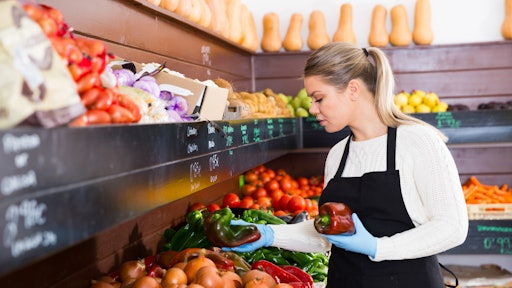
The food industry landscape is changing. Recent supply chain instability, technology advancements, and customer safety requirements have evolved in recent years. Supply chain professionals need a way to keep up.
Fortunately, advanced food industry technologies relieve both suppliers and consumers. Item-level traceability is transforming the food and restaurant industry with precise, efficient solutions that inform everyone along the journey, from producer to consumer.
With significant regulatory implementations like the FDA Food Safety Modernization Act (FSMA) 204, track-and-trace technology is in prominent demand.
Three things steady the pulse of every restaurant and food industry operation: safety, compliance, and reputation. To maximize all three, cutting-edge technology must be adopted at a large scale.
Traditional food safety concerns in the supply chain
Throughout history, restaurants and producers have faced a consistent challenge: ensuring the safety and quality of food. Safety risks arise primarily due to insufficient monitoring, tracking, and handling of consumable products.
With so many moving parts, tracking food-borne illness sources and contamination incidents has not been straightforward. Until the emergence of supply chain technology, companies have had to keep records manually, which made locating and mitigating recalls a logistical nightmare.
To address this cumbersome limitation, food companies are reaching for item-level visibility technology to effectively trace their products’ every step. The result? Mitigated insufficiencies, minimized health and safety risks, and decreased food waste.
Industry demands for item-level traceability technology
Item-level traceability solutions provide restaurants with real-time visibility of every movement throughout their supply chain. Advanced tools like radio-frequency identification (RFID), Internet of Things (IoT) sensors, blockchain, and serialized barcodes track individual and bulk items.
From first origin to customers’ hands, restaurants gain access to important data for actionable outcomes. Early detection, product traceability, predictive insights, and recall management are several key solutions of item-level traceability technology—more as follows.
Ensure food safety
Every year, more than 48 million people in the United States alone experience food-related illnesses. Many of these can be prevented with early detection across food suppliers. Real-time item-level visibility (RTILV) can identify the source, monitor potential spread, and enable swift recall before more consumers become affected.
Increase quality control
Restaurants that track the origin of safety and health incidents experience better control over ingredients. Every detail from harvest to handling to storage is accessible with RTILV technology, equipping companies to vet which ingredients to use or discard, promising high-quality, safe dishes. Additionally, businesses protect themselves from legal issues.
Facilitate consumer transparency and trust
Consumers increasingly value transparency about the products and ingredients they consume, opting to buy from companies they can trust. Item-level traceability equips restaurants and food suppliers to accurately disclose where their ingredients are from, how products were sourced, what production methods were used, and how fresh each item is. If information is power and transparency is key, providing both unlocks a new level of customer trust.
Enable effective recall management
While item-level traceability mitigates recalls, it also simplifies the process when a recall might occur. Easy identification of affected products reduces the magnitude of recalls, minimizing food waste and stopping affected items before they reach their vendor. Effective recall management hence minimizes financial loss, protecting your company’s bottom line.
Optimize your supply chain process
Accurate traceability solutions encourage optimal supply chain movement and handling, helping restaurants manage their operations more efficiently. It’s all about reducing costly mistakes, preventing food waste, and cutting transportation costs across your supply chain.
Comply with FDA FSMA regulations
The FDA FSMA 204 was set in place in September 2020 to establish improvements in tracking and tracing high-risk food products. As a result, regulations now require food facilities to maintain precise records and product tracing. Item-level traceability technology enables facilities to remain compliant with ease and provide critical tracking events when food safety issues arise.
Large food chains are transitioning to RFID and item-level traceability technology to secure customer safety and company success.
Real-time item-level visibility: Track and trace through the food supply chain
From fresh, local ingredients to high-quality global imports, item-level traceability is making the food supply chain safer than ever before.
With accurate, efficient safety and quality management protocols in place, brands not only gain the consumer trust they deserve—they reap massive benefits and protections through their entire supply chain. All thanks to RTILV technology.
The future of food is here. To mitigate risk, ensure compliance, and solidify customer loyalty throughout your company, embrace item-level traceability solutions today.


























